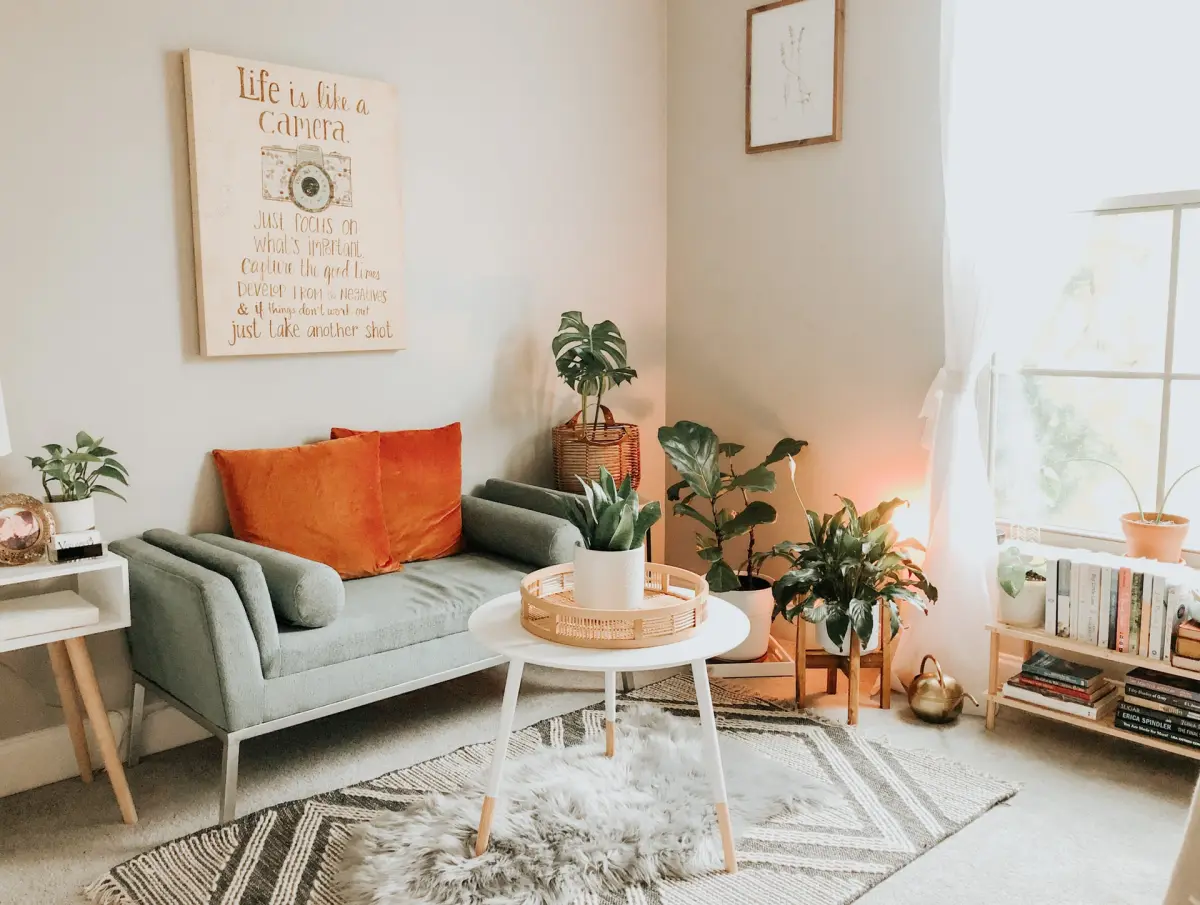In today’s fast-paced and stressful world, finding a serene haven where you can unwind and recharge is more important than ever. Creating a calm and relaxing space in your home can provide a much-needed sanctuary from the chaos of everyday life. By incorporating elements of tranquility and balance into your surroundings, you can transform any room into a peaceful oasis. Here are some tips to help you create your serene haven.
Table of Contents
Choose a soothing color palette
Colors have a significant impact on our moods and emotions. When designing a calm space, opt for soft, muted colors that promote relaxation. Shades of blue, green, and earthy neutrals are known for their calming effects. Avoid loud and vibrant colors that can be visually stimulating and increase stress levels.
Natural elements
Bring nature indoors to create a sense of serenity. Incorporate plants and flowers into your space to add a touch of greenery and improve air quality. Natural materials like wood, stone, and bamboo can also contribute to a calming atmosphere. Consider adding a small indoor fountain or a fish tank, as the sound of flowing water can be incredibly soothing.
Reduce clutter
Clutter is not conducive to a calm and relaxing environment. Take the time to declutter your space and keep only the essentials. Use storage solutions to organize your belongings and keep surfaces clear. A minimalist approach to decor can help create a sense of order and tranquility.
Soft lighting
Harsh overhead lighting can be jarring and disrupt the peaceful ambiance. Opt for soft, warm lighting instead. Use floor lamps, table lamps, or wall sconces with dimmable bulbs to create a cozy and soothing atmosphere. Candlelight can also add a touch of tranquility to your space.
Comfortable seating
Invest in comfortable seating options that encourage relaxation. Soft, plush cushions, cozy armchairs, and comfortable sofas can make all the difference. Choose furniture with clean lines and simple designs to maintain a sense of calmness.
Aromatherapy
Scent can have a powerful impact on our mood and well-being. Introduce calming scents into your space through aromatherapy. Use essential oils, scented candles, or incense sticks with fragrances such as lavender, chamomile, or jasmine to promote relaxation and tranquility.
Soundproofing
Noise pollution can be a significant source of stress. If you live in a noisy neighborhood or have loud neighbors, consider soundproofing your space. Install soundproof curtains, add carpets or rugs to absorb sound, and use noise-canceling devices or white noise machines to create a quieter environment.
Personal touches
Incorporate elements that bring you joy and peace. Display photographs, artwork, or mementos that hold special meaning to you. Surround yourself with objects that evoke positive emotions and memories. A serene haven should reflect your taste and preferences.
Technology-free zone
Create a technology-free zone in your serene haven. Keep electronic devices, such as phones, laptops, and televisions, out of the space. Instead, use this area as a dedicated space for relaxation, meditation, reading, or practicing mindfulness.
Embrace simplicity
Finally, remember that simplicity is key when creating a calm and relaxing space. Avoid overcrowding your haven with excessive decor or furniture. Embrace a clean and uncluttered aesthetic that allows you to focus on peace and tranquility.
Get rid of the clutter
We think that a messy home is incompatible with tranquility. When your home is overrun with various objects and trinkets, it may appear smaller than it is and cause you to feel cramped. It’s not at all peaceful if you feel like your house is closing in around you. Therefore, before you do anything else to make your home more relaxing, be sure you clean and tidy it, especially with the aid of a professional cleaning service.
Choose subdued colors
In terms of interior design, color is crucial. That’s because it creates the atmosphere you want in a room. So, it might have an impact on your mood. You should therefore consider color psychology when deciding on the right color for certain areas of your home. Depending on the primary tasks you intend to complete in the space, you can alter the color of the area. For instance, colors that promote relaxation and sleep may not be the greatest choice if you have a study or office space in your house. Light blues and whites are invariably dependable choices for your bedroom, where you want to feel as calm and peaceful as possible.
Make use of warm-colored lighting
Speaking of color, selecting the proper lighting is another method to make certain areas of your home cozier and more appealing.
Choosing the proper light fixture can change the color of a room because some lights have a chilly effect while others have a warmer one. Again, it all depends on which room you want to have a particular color temperature. For every area of your house, it is recommended to get warm color temperature bulbs. This is due to the bluish-white color option giving your home a clinical rather than tranquil appearance.
By following these tips, you can transform any room into a serene haven that provides a much-needed escape from the stresses of daily life. Remember to personalize your space and create an environment that resonates with you. A calm and relaxing space will not only improve your well-being but also allow you to recharge and face the world with renewed energy and serenity.
